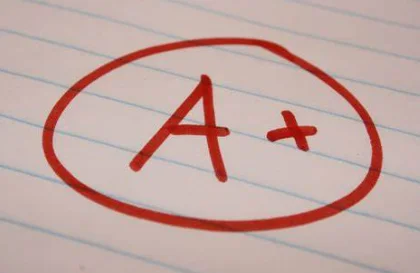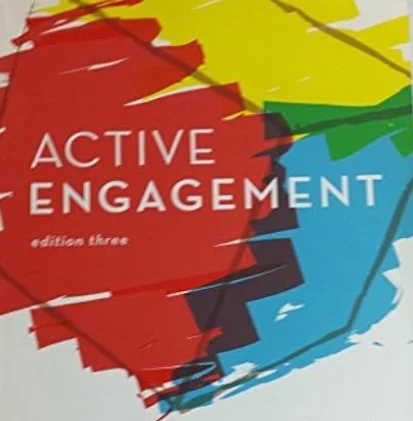It is typical for pupils to worry if their teachers have favorites in the live classroom. The idea of teacher favoritism can cause children to experience a range of feelings and impressions.
One can promote a fair and inclusive learning environment for all students by thoroughly comprehending the mechanisms of favoritism in the classroom.
This post explores the warning indications of teacher favoritism, examines the possible reasons for it, and provides solutions for how to deal with it.
Do Teachers Have Favorites?

Favorites may get more attention, praise, or leniency, which can give the impression that the classroom is unbalanced.
It is crucial to remember that not all teachers prefer certain students and that many genuinely try to treat every student equally.
Professors can favor certain students over others. Although they try to be objective and treat all students equally, instructors’ prejudices and preferences might occasionally affect their behavior.
We can overcome favoritism by knowing its symptoms, root causes, and management techniques. Even so, this will assist in fostering a pleasant learning environment.
Reasons Why a Teacher Can Have Favorite Students
There can be several reasons why a teacher may have favorite students. Remembering that these reasons are subjective and can vary from one teacher to another is essential.
Here are four possible factors that can contribute to the formation of teacher favorites:
Personal Connection
Teachers may naturally develop a personal connection or bond with certain students based on shared interests, similar personalities, or a deeper understanding of their background.
Remember, this connection can create a sense of familiarity and comfort, leading to perceived favoritism.
Academic Performance

Students who consistently excel may receive more attention and praise from teachers.
More importantly, this recognition can inadvertently lead to the development of a preference for these high-performing students.
Teachers may gravitate towards students who consistently exhibit positive behavior, engage actively in class discussions, and follow the rules.
Even so, such students often contribute to a positive classroom environment, and teachers may unconsciously favor them.
Communication and Participation
Students who actively participate in class, ask thoughtful questions, and engage in discussions are likelier to catch a teacher’s attention.
More importantly, teachers may appreciate their enthusiasm and responsiveness, inadvertently leading to a preference for these students.
Some Signs of Teacher Favoritism
Students, parents, and teachers can all benefit from being aware of the warning signals of teacher bias. The following list includes five typical indicators of favoritism:
Differential Treatment
The treatment of a kid’s inconsistency is one obvious indicator. Favorite students may be granted additional advantages, such as extra time, longer deadlines, or unique chances that are unavailable to other students.
Excessive Praise and Attention
Teachers may frequently give some kids excessive praise and attention even for modest accomplishments. Other students who receive less attention may feel that this shows favoritism.
Leniency and Exceptions

Teachers may be more lenient with their favorites regarding regulations and penalties.
They might make an exception or ignore a minor infraction while applying the same rules more strictly to other students.
Preferred Group Assignments
Teacher favorites may be consistently grouped for projects or assignments, while other students are left out or assigned to less desirable groups. This pattern can create an imbalance in collaborative learning opportunities.
Non-Verbal Cues
Observing non-verbal cues, such as body language and facial expressions, can also provide insights into favoritism. Teachers may display warmth, smile more, or maintain better eye contact with their favorites, indicating a possible bias.
How to Deal with Teacher Favoritism
Personal Connection
Teachers may naturally develop a personal connection or bond with certain students based on shared interests, similar personalities, or a deeper understanding of their background. This connection can create a sense of familiarity and comfort, leading to perceived favoritism.
Academic Performance
Students who consistently excel may receive more attention and praise from teachers. This recognition can inadvertently lead to a preference for these high-performing students.
Behavioral Conduct
Teachers may gravitate towards students who consistently exhibit positive behavior, engage actively in class discussions, and follow the rules. Normally, such students often contribute to a positive classroom environment, and teachers may unconsciously favor them.
Communication and Participation
Students who actively participate in class, ask thoughtful questions, and engage in discussions are likelier to catch a teacher’s attention. Teachers may appreciate their enthusiasm and responsiveness, inadvertently leading to a preference for these students.
How to Become a Teacher’s Favorite Student
Dealing with teacher favoritism can be challenging, but there are strategies that students and parents can employ to address the issue. Here are some effective approaches:

1. Self-Advocacy
Students should express their concerns to the teacher in a respectful and non-confrontational manner.
Share how their actions or behavior may be perceived as favoritism and how it affects classroom dynamics.
More importantly, if students feel unfairly treated, they can ask the teacher to clarify grading criteria, assignments, or other areas where favoritism may be perceived. Also, this helps ensure transparency and fairness.
2. Parent-Teacher Communication
Parents can request a meeting with the teacher to discuss their concerns regarding favoritism. Sharing specific examples and observations can help facilitate a constructive dialogue.
In line with this, suppose the issue persists or the teacher is unresponsive, parents can escalate their concerns to the school administration. Remember to offer evidence and documentation of the favoritism to support the case.
3. Focus on Personal Growth
Students should concentrate on their personal growth and academic progress instead of dwelling on perceived favoritism. Set goals, work diligently, and seek opportunities to excel based on personal merit.
Students can also seek additional assistance or guidance from other teachers, tutors, or mentors to supplement their learning experience and enhance their skills.
4. Foster a Supportive Network
Forming positive relationships with classmates and engaging in collaborative activities can create a supportive network within the classroom. Shared experiences can help mitigate the impact of favoritism.
Lastly, encourage open communication among parents and guardians of other students to collectively address concerns related to favoritism. Supportive parents working together can advocate for a fair learning environment.
How to Maintain Being a Teacher’s Favorite
While promoting a fair and inclusive learning environment is important, it is equally understandable that students may want to maintain a positive rapport with their teachers. Here are some strategies to foster a healthy teacher-student relationship:
Active Engagement

Begin engaging in class discussions, asking questions, and contributing thoughtfully to the learning process.
Active participation demonstrates your interest and enthusiasm for the subject matter.
Remember to treat your teacher respectfully, listen attentively, and demonstrate gratitude for their guidance and instruction. Respectful behavior helps cultivate a positive connection.
Consistent Effort
Submit your assignments promptly and demonstrate a consistent work ethic. Meeting deadlines showcases responsibility and reliability.
Still, aim for high-quality work and strive to excel academically. Consistent effort and dedication to your studies can earn the respect and appreciation of your teacher.
Positive Attitude
Approach each class positively, showing genuine interest in the subject matter. Your enthusiasm can make the learning experience enjoyable for you and your teacher.
More importantly, collaborate effectively with peers, support classmates, and foster a cooperative classroom environment. Teachers appreciate students who contribute to a positive and supportive atmosphere.
Seek Feedback and Growth
Seek feedback from your teacher on your progress and areas for improvement. Actively apply their suggestions to enhance your learning and showcase your commitment to personal growth.
Also, reflect on your performance and set goals for self-improvement. Demonstrating a proactive approach to your learning journey can impress your teacher.

Joseph is a freelance journalist and a part-time writer with a particular interest in the gig economy. He writes about schooling, college life, and changing trends in education. When not writing, Joseph is hiking or playing chess.
